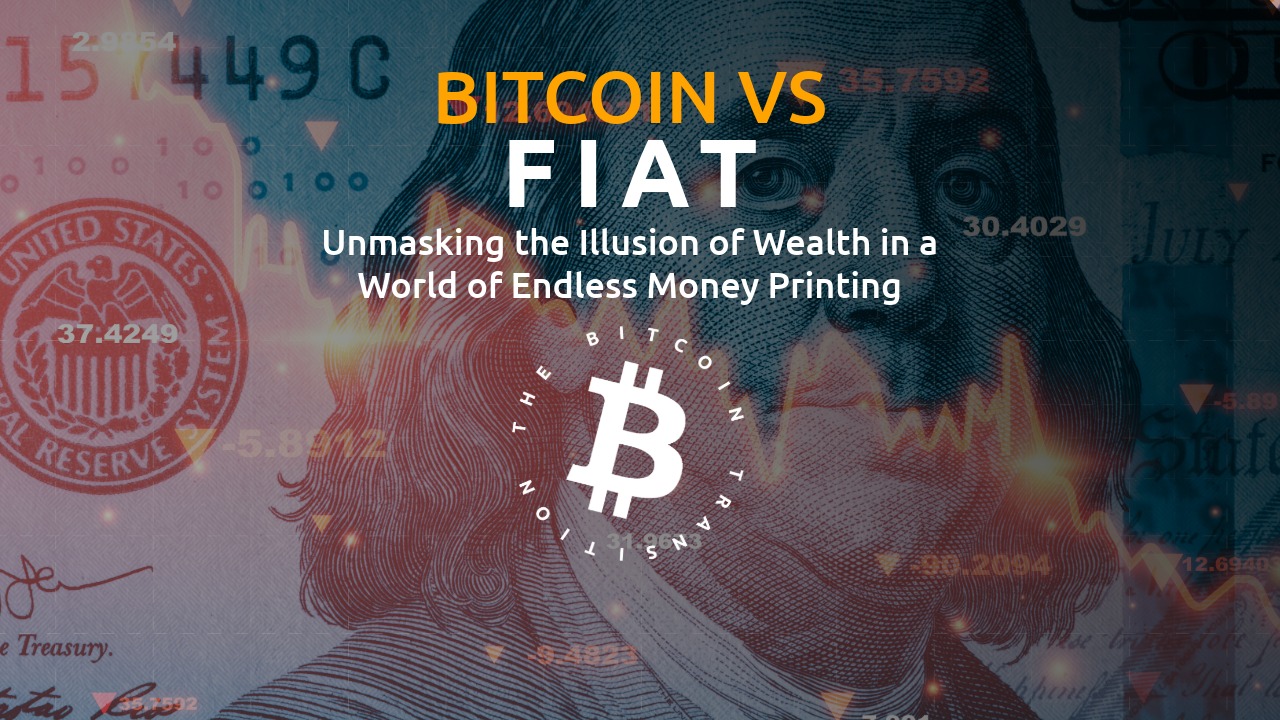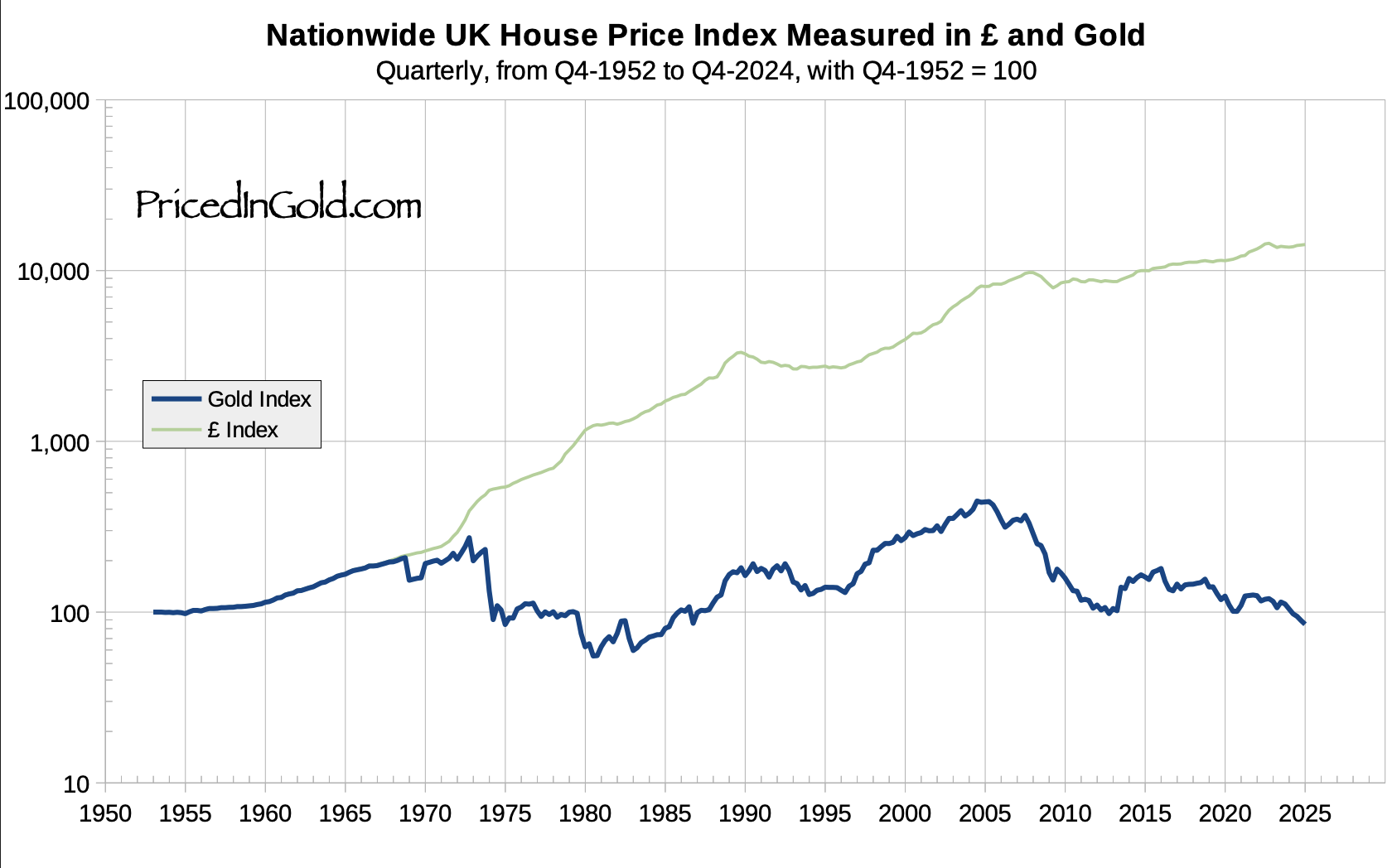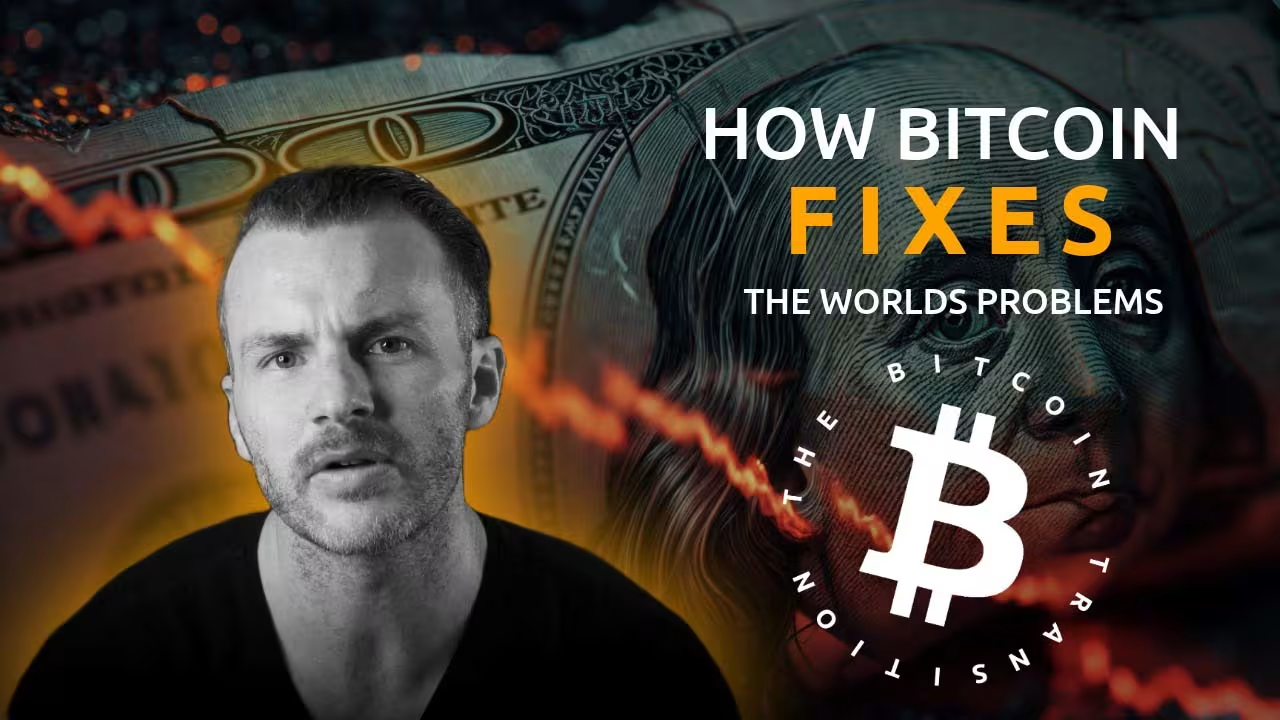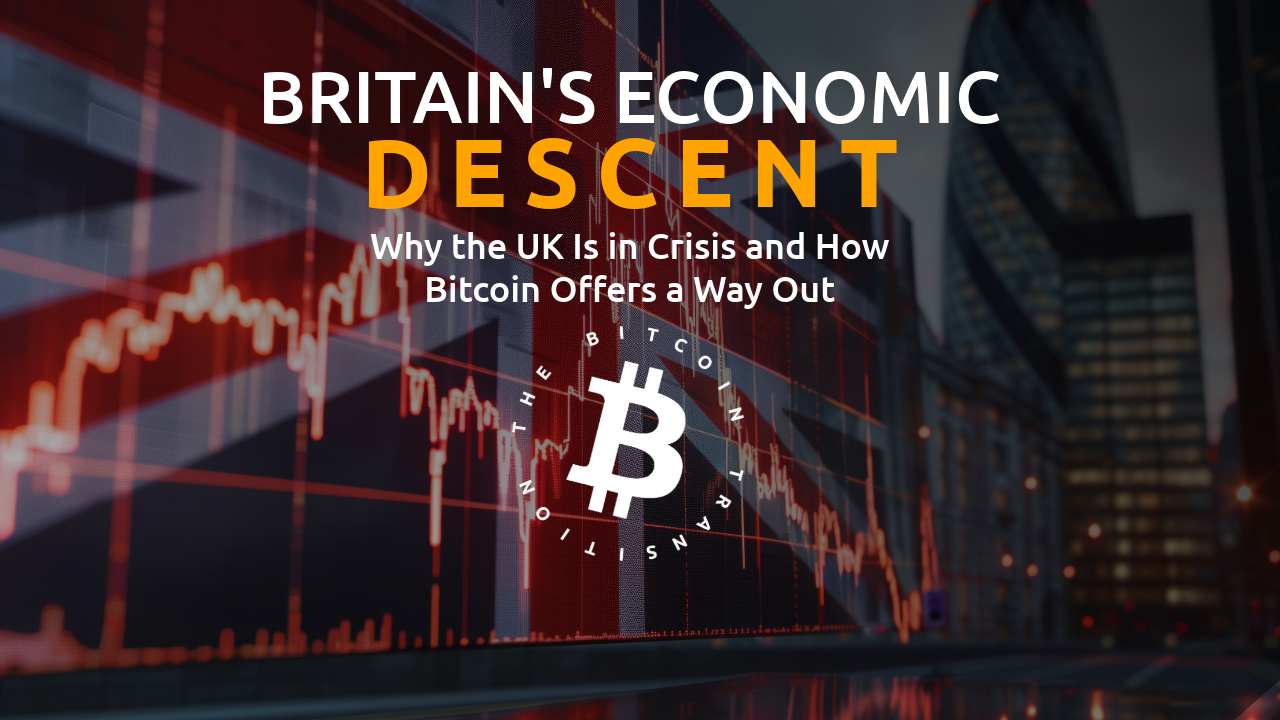Bitcoin vs Fiat: Unmasking the Illusion of Wealth in a World of Endless Money Printing
How fiat currencies systematically destroy purchasing power whilst Bitcoin offers a return to sound money principles

Bitcoin vs Fiat: Unmasking the Illusion of Wealth in a World of Endless Money Printing
How fiat currencies systematically destroy purchasing power — and why Bitcoin offers a return to sound money principles.
Introduction: The Illusion of Prosperity
In the wake of decades of monetary manipulation, a stark truth confronts every working person in the world: while your salary may look larger than your parents’, you’re actually poorer in real terms.
This isn’t opinion. It’s maths.
Since abandoning the gold standard, fiat currencies have been systematically debased — transferring wealth from savers and workers to governments, financial elites, and asset holders. Rising nominal wages and booming asset prices have concealed this historic wealth transfer under a thick veil of illusion.
Bitcoin exposes this deception. But more importantly, it offers a solution — a path back to sound money.
What Is Sound Money — And Why Does It Matter?
Sound money carries five essential traits: scarcity, durability, divisibility, portability, and recognisability.
Historically, gold served this role. It constrained governments, promoted long-term savings, and supported real economic growth. Under the classical gold standard, prosperity wasn’t driven by debt — it was built through discipline.
Then came the turning point.
The Nixon Shock: The Day Money Died
On 15 August 1971, President Nixon “temporarily” suspended the US dollar’s convertibility into gold — effectively ending the Bretton Woods system and giving rise to the fiat monetary regime.
From that moment forward, all currencies became unbacked paper — created by decree, not by value.
This marked the beginning of the largest monetary experiment in human history. The effects have been devastating for anyone earning wages or trying to save.
The Decline of Purchasing Power: Measured in Gold
Britain’s Long Slide into Debasement
- 1931: Average UK worker earned ~£160/year = 80 ounces of gold (£2/oz).
- 2025: Median income ~£37,000/year = 14.8 ounces of gold (£2,500/oz).
That’s a 81.5% decline in purchasing power — even though salaries rose nearly 200-fold in fiat terms.
America’s Fiat Era Collapse
- 1971: Median US income $10,290 = 294 ounces of gold.
- 2025: Median US income $70,000 = <19 ounces of gold.
That’s a 93.6% collapse in purchasing power — the steepest wealth erosion in modern economic history.
Asset Prices: Not Booming — Just Inflated
Housing: The Great Deception
1952 UK: Average house = 100 oz gold
2025 UK: Average house = just below 100 oz gold
In nominal terms, house prices in the UK have soared from around £1,863 in the 1950s to over £280,000 today—a staggering 15,000%+ increase. However, when measured in gold, the story is entirely different. The average UK house cost approximately 100 ounces of gold in 1952 and requires almost exactly the same—just below 100 ounces—in 2025.
Key Point:
Despite the massive rise in price tags when measured in pounds, the real value of a typical UK house has barely changed in gold terms over 70+ years. This demonstrates that the perceived boom in house prices is almost wholly an illusion created by the collapse in the pound’s purchasing power, not by an equivalent increase in real value.
“Measured in gold, the average UK house price remains essentially unchanged since 1952—hovering around 100 ounces—while in pounds it has exploded more than 15,000%. This is powerful evidence that inflation is a monetary illusion, not a real gain in property value.”

Stocks: Gains or Just Debasement?
The FTSE 100 rose from 1,000 (1984) to ~8,200 (2024). But in gold terms, the index has barely moved — from 800 oz to 900 oz. The “growth” is almost entirely a function of currency debasement.
The Mechanics of Monetary Theft
Quantitative Easing: Digital Counterfeiting
Since 2008, central banks have printed trillions. The Bank of England’s balance sheet rose from £100B to over £800B — creating massive inflation in asset prices.
The Cantillon Effect
Those closest to the money printer benefit first:
- Governments
- Banks
- Asset owners
- Large corporations
Meanwhile, workers and savers — furthest from the source — lose out as their cost of living rises but wages stagnate.
Fiat Currency: A System That Punishes Productivity
Since 1971, UK and US productivity has soared. But wages haven’t kept up.
- Productivity up ~70%
- Real wages up ~12%
The difference — trillions — has flowed to executives, banks, governments, and the financial sector. This decoupling began with the end of sound money.
Enter Bitcoin: Digital Sound Money
Bitcoin is not just a new technology. It’s a new monetary foundation.
21 Million Supply Cap
Unlike fiat currencies, Bitcoin is mathematically capped. No central bank can print more.
Its stock-to-flow ratio already exceeds gold — and becomes more scarce over time via halving.
Decentralised and Borderless
Bitcoin has no central point of failure. No government, no central bank. It runs on a network of nodes — globally distributed and censorship-resistant.
Transparent, Predictable, Immutable
Every transaction is recorded on an open ledger. Monetary policy is baked into the code. No surprises. No manipulation.
Historic Case Studies: Sound Money Works
Britain’s Golden Age (1870–1914)
- Real GDP growth: 2.2% annually
- Real wages: +60%
- Inflation: Near zero
- Infrastructure, trade, and prosperity flourished
US Railroad Boom (1869–1879)
Despite 65% deflation, the US built the transcontinental railroad — the largest infrastructure project of its time. Deflation due to productivity, not depression.
CBDCs: Fiat’s Final Form
Central Bank Digital Currencies (CBDCs) are being marketed as “progress” — but they threaten privacy, autonomy, and liberty.
Features include:
- Real-time tracking of every transaction
- Programmable restrictions on where and how you spend
- Automatic taxation and fines
- Expiry dates on your money
Unlike Bitcoin, CBDCs are designed for control — not freedom.
Bitcoin vs Fiat: The Economic Justice Case
Restores the Link Between Work and Reward
When money can’t be created arbitrarily, savers and workers benefit from productivity gains — not just bankers and politicians.
Ends the Cantillon Effect
New Bitcoin enters circulation through proof-of-work mining — not via political connections.
Protects Savings
Bitcoin is resistant to inflation, confiscation, and censorship. Self-custody makes you your own bank.
Network Effects: Why Bitcoin Is Winning
- Metcalfe’s Law: Bitcoin becomes exponentially more valuable as adoption grows.
- Institutional adoption is accelerating: MicroStrategy, Tesla, BlackRock, and even nation states like El Salvador.
- Lightning Network: Fast, cheap, scalable payments — enabling Bitcoin to function as both a store of value and medium of exchange.
The Moral Argument for Bitcoin
Self-Sovereignty
Control your wealth without permission from banks or governments.
Economic Inclusion
In places like Argentina, Nigeria, and Turkey, Bitcoin is a lifeline for those facing currency collapse or authoritarian regimes.
Intergenerational Fairness
With Bitcoin, young people can finally save in a currency that cannot be inflated away.
The Inevitable Transition
Fiat’s Endgame
Governments are trapped: stop printing and risk collapse, or keep printing and destroy the currency. Either path ends the fiat era.
The Bitcoin Reset
Unlike the elite-driven “Great Reset,” Bitcoin offers a peaceful, voluntary transition — where freedom, not control, is the default.
Preparing for the Bitcoin Standard
- Stack sats through dollar-cost averaging.
- Learn self-custody with tools like Coldcard or Trezor.
- Join circular economies that operate on Bitcoin.
- Educate others and spread awareness.
- Earn in Bitcoin to opt out fully.
Conclusion: Choose Sound Money — Or Be Left Behind
This is more than a debate about technology. It’s about freedom vs control, truth vs illusion, and sound money vs monetary manipulation.
Fiat currency has failed the working class. It has enriched the few and impoverished the many.
Bitcoin is not just the solution — it’s the exit.
Ready to protect your savings from fiat destruction?
Start your Bitcoin journey today with The Bitcoin Transition.
Learn how to take control of your financial future with self-custody, sound money principles, and real economic sovereignty.


